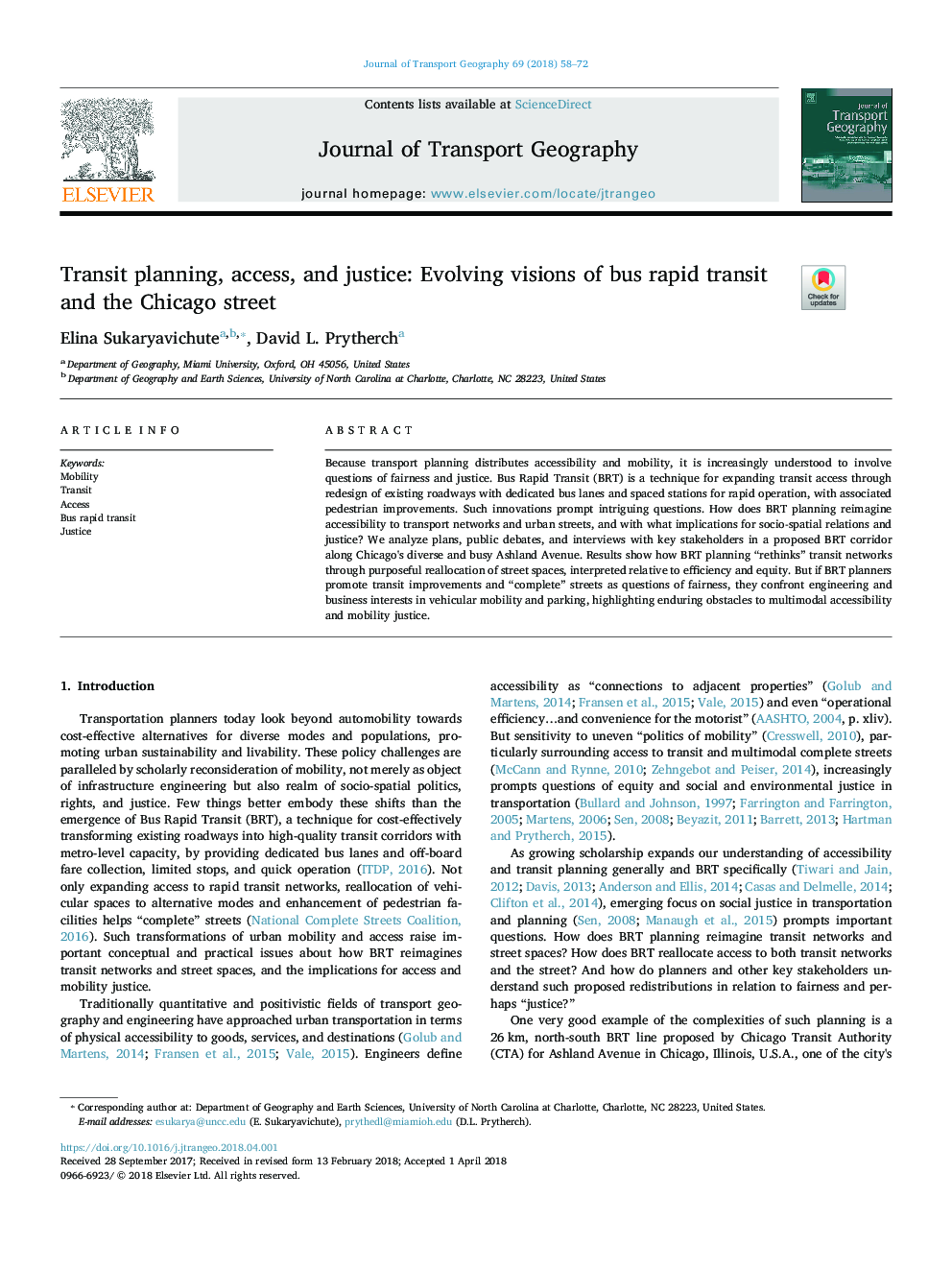| Article ID | Journal | Published Year | Pages | File Type |
|---|---|---|---|---|
| 7485035 | Journal of Transport Geography | 2018 | 15 Pages |
Abstract
Because transport planning distributes accessibility and mobility, it is increasingly understood to involve questions of fairness and justice. Bus Rapid Transit (BRT) is a technique for expanding transit access through redesign of existing roadways with dedicated bus lanes and spaced stations for rapid operation, with associated pedestrian improvements. Such innovations prompt intriguing questions. How does BRT planning reimagine accessibility to transport networks and urban streets, and with what implications for socio-spatial relations and justice? We analyze plans, public debates, and interviews with key stakeholders in a proposed BRT corridor along Chicago's diverse and busy Ashland Avenue. Results show how BRT planning “rethinks” transit networks through purposeful reallocation of street spaces, interpreted relative to efficiency and equity. But if BRT planners promote transit improvements and “complete” streets as questions of fairness, they confront engineering and business interests in vehicular mobility and parking, highlighting enduring obstacles to multimodal accessibility and mobility justice.
Related Topics
Life Sciences
Environmental Science
Environmental Science (General)
Authors
Elina Sukaryavichute, David L. Prytherch,
